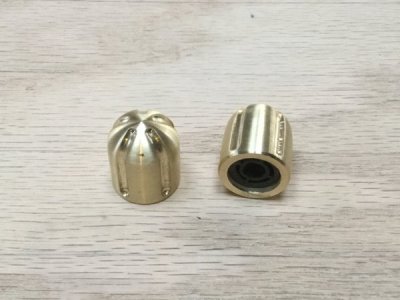I’m looking to add some extra functionality to my guitar knob making jig. The knobs I make have radial to straight grooves, as seen in the attached pic. On the straight section, I’m looking to twist the grooves. So that would require the knob to not only turn as I cut with my 1/8” round bottom mill, but to advance down the knob as well. I’m thinking a shaft I can turn that has a single twisted groove that I can follow somehow will be how I accomplish this.
Any idea what those grooved shafts are called? I want to read up on them to see if that’s the correct route and also to figure out what size and length of groove for a given shaft size will accomplish my goal. The end result will be the knob looking like a worm gear on the straight portion of the knob.
As always, any and all advice is greatly appreciated.

Any idea what those grooved shafts are called? I want to read up on them to see if that’s the correct route and also to figure out what size and length of groove for a given shaft size will accomplish my goal. The end result will be the knob looking like a worm gear on the straight portion of the knob.
As always, any and all advice is greatly appreciated.

